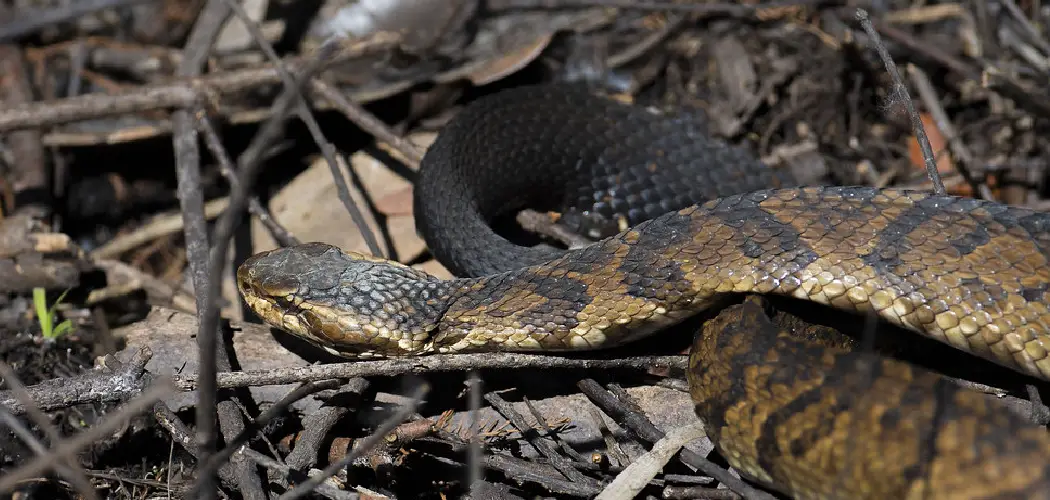Cottonmouth snakes, also known as water moccasins, are venomous reptiles found primarily in the southeastern United States. Recognizable by their distinctively cotton-like mouths, these snakes can be intimidating and potentially dangerous if encountered in or around homes, especially near water sources. Understanding effective methods to rid your property of cottonmouth snakes is essential for safety and peace of mind. While these snakes play crucial roles in their ecosystems, their presence near human habitats can pose risks.
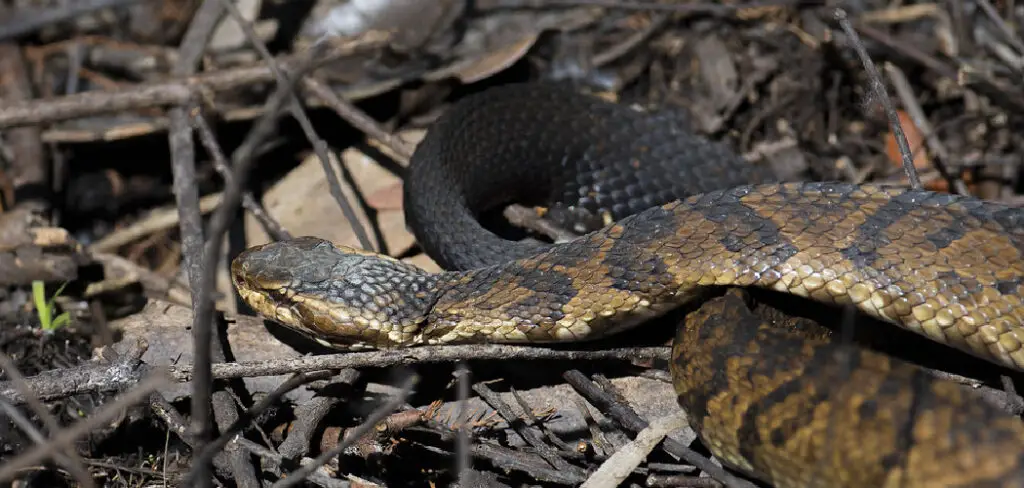
In this article, we will explore various strategies and techniques on how to get rid of cottonmouth snakes from your surroundings. From preventative measures like habitat modification to humane removal methods and professional assistance, we’ll delve into practical approaches to mitigate encounters and manage populations responsibly.
By implementing these strategies, homeowners and residents can safeguard themselves, their families, and their pets while fostering harmonious coexistence with local wildlife. Let’s delve into the proactive steps to address cottonmouth snake concerns effectively.
Importance of Safely Removing Cottonmouth Snakes from Surroundings
Ensuring the safe removal of cottonmouth snakes from residential areas is of utmost importance. Not only does it protect the individuals and pets who reside there, but it also preserves the delicate balance of the ecosystem. Cottonmouth snakes, like all wildlife, serve a significant role in controlling the population of their prey, which includes rodents and other small mammals.
Improper removal can disrupt this natural pest control and may have detrimental effects on the local environment. Furthermore, the manner in which these venomous snakes are removed can impact their well-being and conservation status. It is crucial that the methods employed are effective, humane, and comply with wildlife regulations to maintain biodiversity while keeping human-snake encounters to a minimum.
Understanding Cottonmouth Snakes
Cottonmouth snakes (Agkistrodon piscivorus) are semi-aquatic reptiles adept at thriving both in water and on land, often residing in the vicinity of swamps, marshes, and streams. Intrinsically linked with wetlands, these snakes are apex predators in their habitat, exhibiting a carnivorous diet that includes fish, amphibians, and smaller snakes.
Their distinctive defensive behavior, a wide-open mouth exposing the white interior that gives them their name, is a warning gesture rather than an open challenge. Understanding their behavior and natural habitat preferences is paramount in determining the most effective ways to deter them from encroaching on human spaces. Knowledge about their biology and ecology can inform and assist in the creation of preventive measures that protect both humans and snakes.
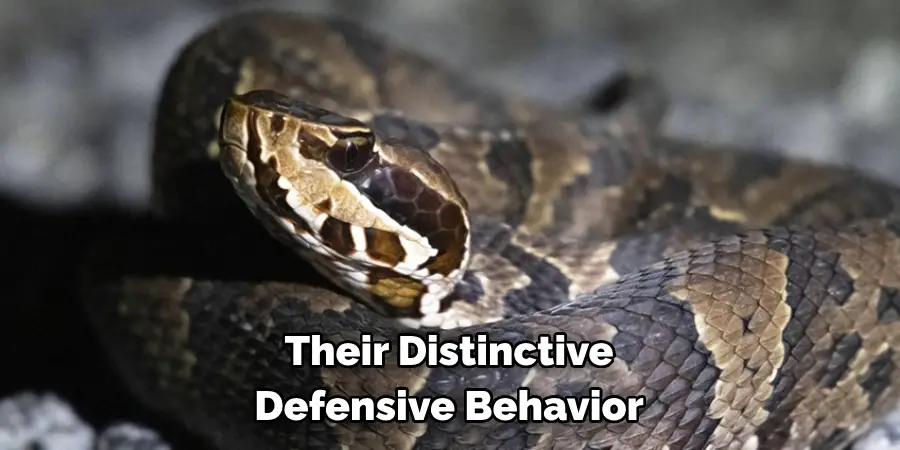
Identification and Characteristics of Cottonmouth Snakes
Proper identification of cottonmouth snakes is critical in managing their presence. They are often confused with non-venomous water snakes, which leads to unnecessary fear and potential harm to both species. Adult cottonmouth snakes feature heavy, thick bodies and can grow to lengths of about 30 to 48 inches.
Their color patterns can vary widely, ranging from dark bands on a lighter background to almost entirely black in older individuals. Juveniles have brighter patterns with a more distinct banding that fades as they age.

Key identifying characteristics include their blocky, triangular heads, cat-eye-shaped pupils, and the heat-sensing pits located between their eyes and nostrils, which are indicative of pit vipers. These snakes are also known for their unique defensive display whereby they open their mouths to expose the trademark cotton-white interior as a warning sign to potential threats. Recognizing and distinguishing cottonmouth snakes from other common water snakes is an essential part of safely managing their appearances on your property.
Behavior and Habitats of Cottonmouth Snakes
Cottonmouth snakes are recognized for their distinctive basking habits, often found lounging on branches or stones near water bodies to absorb warmth. Their preference for such terrains is closely tied to the availability of their prey and the security that aquatic environments provide. They are primarily nocturnal, becoming most active at dusk and through the night, which is when they do much of their hunting.
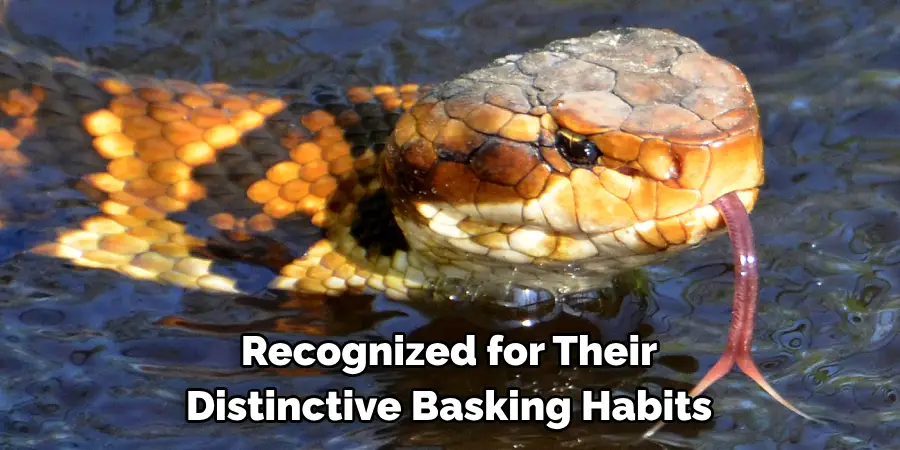
Cottonmouths are not innately aggressive creatures and will typically only strike in self-defense when they feel threatened. When disturbed, they may coil their bodies and expose their fangs as a part of their threat display before retreating or attacking.
Understanding the habitats and behavior of cottonmouth snakes is crucial for implementing effective and non-intrusive strategies to discourage them from frequenting residential areas. They tend to avoid open spaces and are more likely to inhabit overgrown vegetation, logs, and debris piles close to water sources. By maintaining clean, uncluttered yards and respecting the natural boundaries between human and snake territories, the likelihood of an unwelcome encounter diminishes significantly.
Potential Risks Associated with Cottonmouth Encounters
When considering the risks of a cottonmouth encounter, it’s important to recognize the potential dangers these snakes pose due to their venomous bite. A cottonmouth’s venom contains hemotoxins, which can cause pain, swelling, and in severe cases, tissue damage.
If not treated promptly, a bite may lead to serious medical complications or, in extreme circumstances, be fatal. However, cottonmouths generally avoid confrontation with humans and bites often occur as a result of accidental stepping on or threatening the snake. In addition to physical harm, there is a psychological impact for those with ophidiophobia—a fear of snakes—which can make outdoor experiences distressing.
It’s also important to consider the danger to pets, as curious animals may provoke a snake and are as vulnerable to bites as humans. Awareness and caution in areas where these snakes are endemic can considerably reduce the risks associated with an encounter.
10 Methods How To Get Rid of Cottonmouth Snakes
1. Habitat Modification:
Altering the environment around your property can make it less attractive to cottonmouth snakes. Remove clutter, debris, and potential hiding spots such as piles of wood or rocks. Keep grass trimmed short and clear away overgrown vegetation where snakes may seek shelter. Additionally, consider installing snake-proof fencing around your property to further discourage snakes from entering.
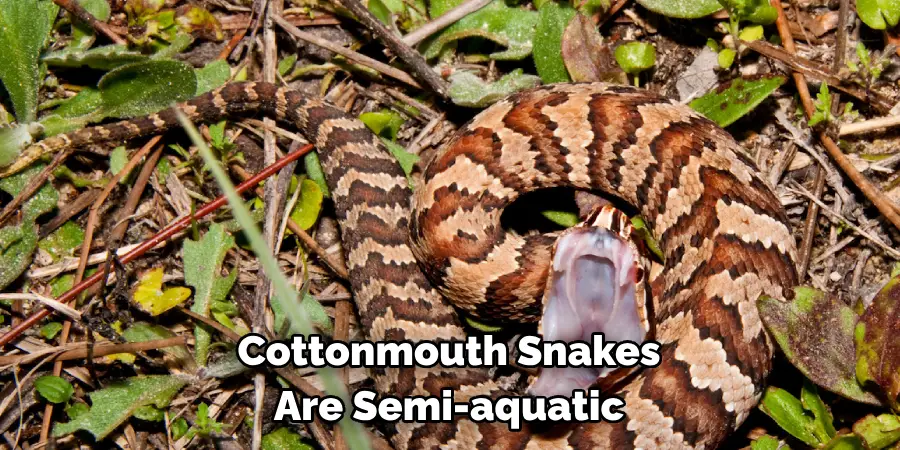
Aside from physical modifications, there are also some natural deterrents that you can use to repel cottonmouth snakes. One method is by planting certain types of plants that are known to repel snakes such as marigolds, lemongrass, and garlic. These plants emit strong smells that snakes find unpleasant, making them less likely to stay in the area.
Another option is to introduce natural predators of cottonmouth snakes into your property. Animals such as raccoons, foxes, and king snakes are known to feed on cottonmouths and can help control their population. However, be sure to research and consider the potential impact these predators may have on other wildlife in your area.
2. Eliminate Food Sources:
Cottonmouth snakes primarily feed on fish, amphibians, and small mammals. By removing potential prey species like frogs and rodents from your property, you can discourage snakes from taking up residence. Consider implementing pest control measures to reduce populations of mice and other rodents. Additionally, removing any standing water or sources of moisture can help decrease the number of amphibians that may attract snakes.
Snakes are also attracted to areas with abundant vegetation and hiding spots. Regularly mowing your lawn and keeping it well-maintained can reduce these potential hiding places for snakes. Trimming back overgrown bushes and shrubs near your home can also help eliminate potential resting spots for snakes.
3. Reduce Water Sources:
Since cottonmouth snakes are semi-aquatic, they are often found near bodies of water. Limiting access to water sources around your property can deter snakes from sticking around. Repair leaky faucets, drain standing water from flower pots or bird baths, and properly maintain swimming pools or ponds.
There are many types of cottonmouth snakes, and some have adapted to living in urban areas. They can often be found near drainage systems or other man-made water sources. To reduce the risk of encountering a cottonmouth snake on your property, eliminate any standing water and keep pools and ponds properly maintained.
Aside from limiting access to water sources around your property, there are other ways to reduce the presence of cottonmouth snakes. Keeping your property free of debris and clutter can discourage them from seeking shelter or hiding spots. This includes removing piles of wood, rocks, and other potential hiding places.
4. Snake-Proof Fencing:
Installing barriers around your property can prevent cottonmouth snakes from entering. Use solid fencing materials that are buried at least several inches underground to deter burrowing. Ensure that the fence is tall enough to prevent snakes from climbing over and that there are no gaps or openings through which they can pass. Additionally, keep the area around your property free of debris and clutter as snakes are attracted to areas that provide cover and food sources.
Another preventive measure is to snake-proof your home by sealing any cracks or gaps in the walls or foundation. This will not only prevent snakes from entering but also other pests that can potentially attract snakes. Make sure to inspect your home regularly for any potential entry points and seal them as soon as possible.

5. Snake Traps:
Utilizing traps specifically designed for capturing snakes can be an effective way to remove cottonmouths from your property. Live traps allow you to capture the snake without harming it, providing an opportunity for safe relocation. Place traps along pathways or near potential hiding spots, baiting them with scent or food to attract the snakes. Once captured, take the trap to a designated area far away from your home and release the snake carefully.
Additionally, there are also glue traps that can be used for smaller snakes or to supplement live traps. These sticky boards are placed in areas where snakes may travel, and once they step on it, they become stuck and unable to escape. While this method may not be ideal for larger snakes or those that are protected species, it can be a helpful tool in controlling the population of smaller, non-venomous snakes.
Another type of trap that is commonly used for snake removal is a funnel trap. This involves creating a funnel-shaped structure with an opening at one end and bait inside to lure the snake in. Once the snake enters the trap, it can’t find its way out and can be safely removed later. However, this method may not be effective for all snake species as some may not enter the trap willingly.
6. Repellents:

While there is limited scientific evidence supporting the efficacy of snake repellents, some homeowners choose to use them as a deterrent. Chemical repellents containing sulfur or naphthalene are commonly marketed as snake deterrents. However, their effectiveness can vary, and they may need to be reapplied regularly. Additionally, these chemicals can be harmful to other animals and the environment.
Other types of snake repellents include natural oils such as cinnamon or clove oil. These are often marketed as safer alternatives to chemical repellents but may still need to be reapplied frequently to remain effective. Some people also use noise machines or vibrating devices as a deterrent, but their effectiveness is also not scientifically proven.
7. Exclusion Zones:
Create designated areas around your home where cottonmouth snakes are not welcome. Seal off entry points such as gaps under doors, cracks in walls, or openings around utility pipes. Use caulk, weather stripping, or mesh screens to block potential entryways and prevent snakes from gaining access indoors. Keep grass and shrubs trimmed, especially near the perimeter of your home. This will help eliminate potential hiding spots for snakes.
Continue to maintain exclusion zones on a regular basis. Check for any new entry points or areas where snakes may have found their way in. Seal off these areas immediately to prevent future intrusions.
In addition to exclusion zones, consider implementing natural deterrents such as planting mint, lemongrass, or garlic around your home. These plants have a strong scent that snakes tend to avoid.
8. Professional Assistance:
If you’re dealing with a significant cottonmouth snake infestation or if you’re uncomfortable handling snakes on your own, consider seeking help from wildlife or pest control professionals. These experts have the knowledge, experience, and specialized equipment needed to safely remove snakes from your property. They can also provide advice on how to prevent future infestations. However, hiring a professional can be expensive, so it’s important to carefully research and compare different companies before making a decision.
Some factors to consider when choosing a professional include their experience with handling snakes, their methods of removal (e.g. humane trapping vs. lethal methods), and their reputation in the industry. It’s also important to make sure they are licensed and insured, as well as equipped to handle any other potential pests on your property.
Additionally, it’s a good idea to ask for references and read reviews from previous customers. This can give you an idea of the quality of their services and their success rate in dealing with snake infestations. Another option is to contact your local animal control or wildlife agency for assistance. They may have trained professionals
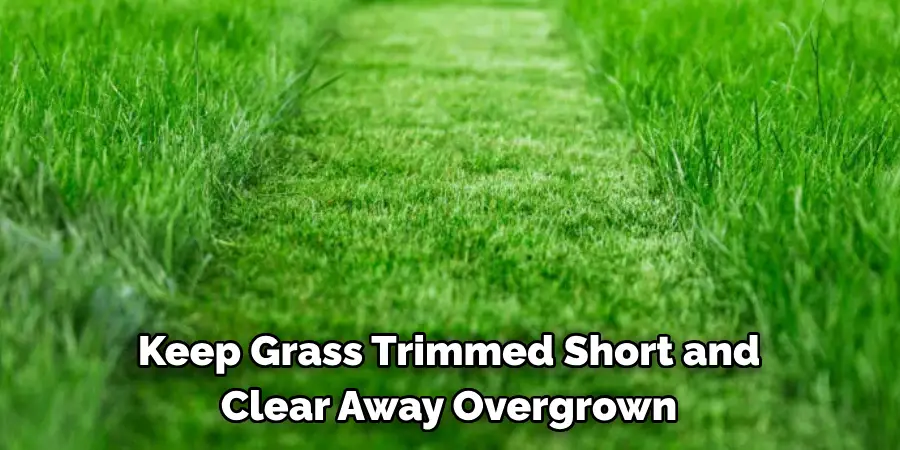
9. Educate Yourself:
Understanding the behavior and habits of cottonmouth snakes can help you effectively manage and prevent encounters. Learn to identify cottonmouths and distinguish them from non-venomous species. Familiarize yourself with the signs of a snakebite and know how to respond in case of an emergency.
Cottonmouth snakes, also known as water moccasins, are a species of venomous snake found in the southeastern United States. They are semi-aquatic and can be found near bodies of water such as swamps, marshes, and streams. Cottonmouths are often misidentified as non-venomous species such as the northern watersnake or the diamondback water snake, so it is important to know how to identify them correctly.
Cottonmouths are usually dark brown or black in color with a distinctive white or yellowish mouth. This is where their name “cottonmouth” comes from as their open mouth exposes their white, cotton-like inner lining. Their bodies are thick and heavy, with males growing up to 4 feet in length and females growing up to 3 feet.
10. Legal Considerations:
Before taking any action to remove cottonmouth snakes from your property, familiarize yourself with local laws and regulations regarding wildlife management and conservation. Some species of snakes may be protected by law, and certain methods of removal or relocation may require permits or authorization from wildlife authorities. It is important to ensure that you are not violating any laws or causing harm to protected species in your efforts to manage cottonmouth snakes.
In addition to legal considerations, there are also ethical considerations when dealing with wildlife on your property. It is important to approach the situation with empathy and respect for these creatures, as they play an important role in our ecosystem. Consider alternative methods of coexisting with cottonmouth snakes, such as implementing habitat modifications or using natural deterrents, before resorting to removal.
Conclusion
In conclusion, effectively managing cottonmouth snakes requires a multifaceted approach that prioritizes safety, coexistence, and responsible wildlife management. By implementing strategies such as habitat modification, removal of food and water sources, snake-proof fencing, and the use of traps or repellents, homeowners can minimize the risk of encounters with cottonmouth snakes on their properties.
It’s crucial to educate oneself about the behavior and identification of cottonmouth snakes and to seek professional assistance when needed. Additionally, understanding and complying with local laws and regulations regarding wildlife management is essential for ensuring legal and ethical practices. Thanks for reading, and we hope this has given you some inspiration on how to get rid of cottonmouth snakes!

